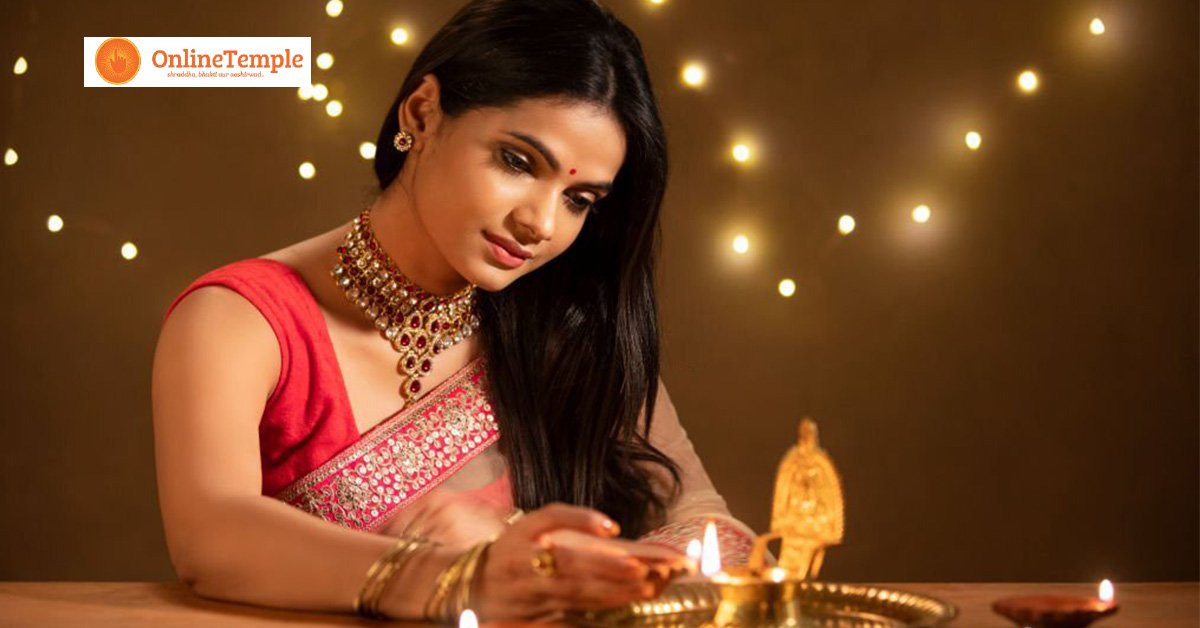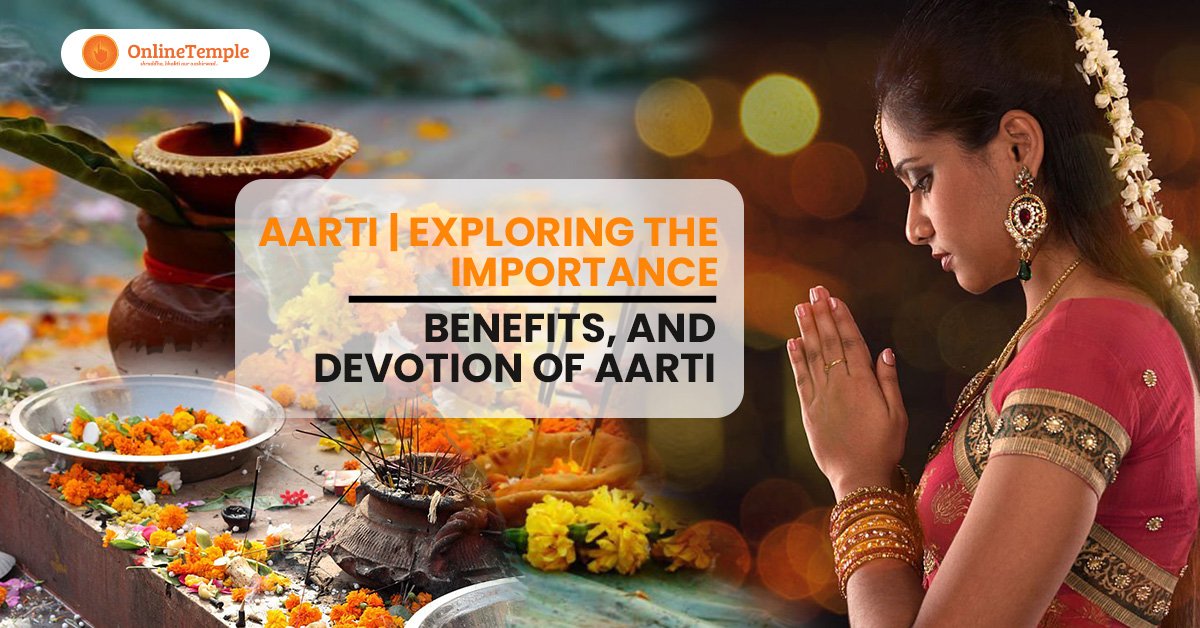Aarti is said to have evolved from the Vedic concept of homa, or fire rituals. The phrase could also refer to the traditional Hindu devotional song associated with the ritual. The goal of aarti is to cultivate the deepest love for God. In Sanskrit, “aa” signifies “towards or to,” while “rati” means “right or virtue.”
Usually, people conduct Aarti at the end of a puja or bhajan session, performing it two to five times daily. It forms an integral part of almost all Hindu rites and festivals. Participants pass around an ‘Aarti plate’ in commemoration of a person or deity, typically singing various praise songs. They believe that the plate itself gains the deity’s power through this process. The priest distributes the prasad to everyone in attendance. As the devotee cups their hands over the flame with palms facing up, they now convey the purificatory blessing that transferred from the deva’s image to the flame.
The aarti plate typically consists of metal, usually silver, bronze, or copper, and must contain a lamp made of kneaded wheat, mud, or metal filled with ghee or oil. A cotton wick is placed inside the oil, and it burns in its place, emitting light or camphor. The plate contains incense, flowers, and the akshata. Furthermore, you can contact Online Temple to obtain profound knowledge about Aarties from skilled pandits.
Devotees conduct Arati by waving lit wicks in front of the deities in an environment of humility and appreciation, intending to immerse themselves in God’s beautiful glory. Its five letters stand for the five elements: Akash (for space), Vayu (for wind), Tej (for light), Jal (for water), and Prithvi (for earth). The communal aarti is done at the temple. However, followers also carry out the ritual in their homes. Additionally, you can also book the best online puja services to acquire the divine grace and blessings of deities.
How to Perform Aarti?

Aarti is one of the sixteen stages (shodash upachaar) that comprise the Hindu puja ritual. A pure spiritual effulgence is illuminated by this auspicious light, known in Sanskrit as “mangal niraajanam.” We wave the flame of the lit lamp in a clockwise motion while holding it in our right hand to illuminate the Lord’s full figure.
While the light is being waved, we can either repeat our prayers out or in our minds, or we can just gaze at the lovely image of the Lord as it is illuminated by the lamp. Our prayers become more intense, and the Lord’s likeness seems to take on a special beauty at that moment. After the Aarti, we place our palms over the flame and then delicately touch the tops of our heads and eyes.
What is the Importance of Performing Aarti

During the Kaliyug, also known as the Age of Conflict, man doubts God’s mere existence. Man has been given the ability to realize God in such a spiritual setting through the offering of Aarti. Aarti is performed while fervently praying to God. When someone prays to a deity through the Aarti, they are given a vision of the deity in the form of light or another holy form. Additionally, reach out to Online Temple to book online Hindu puja services and obtain comprehensive insights into Aarties from knowledgeable pandits.
- God is Appeased: The hymns that are recited during an Aarti in honour of the Deities include a sincere plea to God to obtain his favour. The praise and worship of the person who offers Aarti is therefore appreciated by the Deities and God, who bestow favour.
- Strengthening of Faith: During Aarti, the seeker has a spiritual experience as his spiritual emotion for the Deity he worships is reawakened. This encourages him to be more devoted to the Deity he worships.
- Light a Diya: Light the lamp or diya in front of the deity because fire has the ability to purify us from the inside out.
- Blow the conch: blowing the conch during aarti or puja will produce a divine aura that will invoke God.
- Self-Cleaning: Be sure to cleanse yourself before performing the aarti. Keep your thoughts and mind clear and dress neatly before performing aarti.
- Offer flowers and leaves: Offer a variety of flowers and leaves from peepal and mango trees during the aarti. Mango leaves have a long lifespan and do not rot readily.
- Bowing down: You should also bow your head in respect. It demonstrates the fervour with which worshippers do aarti.
What are the Benefits of Aarti
Aarti is seen as a crucial component of bhakti, or devotional worship, of God. It makes people happy and serves as a method to honour and love God. A person will become whatever they worship. Daily aarti practice benefits us in a variety of ways. Some of the common benefits are as follows:
- The everyday Aarties assist in eradicating all of life’s difficulties.
- Regularly attending aarti will make you healthier and more peaceful.
- The Aarties protect us against misfortune and offer us the fortitude to deal with challenges in life.
- Bless you with blessings. For instance, if you do the goddess Lakshmi’ aarti, you will receive the blessing of financial success.
- The Aarties help you reach Moksha and bring you closer to your God.
- Aarties make our surroundings cleaner and happier.
- We all develop positive traits like morality, sincerity, and honesty.
So, why not benefit twice (spiritually and materially) by performing aarti on a regular basis with dedication and sincerity? Additionally, book online Hindu puja services with Online Temple to receive divine blessings of the deities.
Also Read: How to Identify Negative Energies at Your Home & Get Rid of Them

